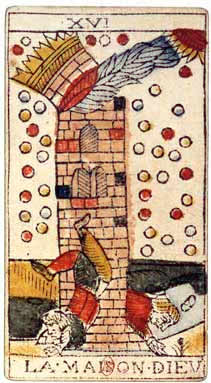
From a single gene differentially spliced into every fiber—Insulin
Receptors mediate their action by adding phosphate, if to wring
The macabre out of every pleasure, where every crime is meal
By meal, to particular tyrosines of insulin receptor substrate—
A something like the mind that planned it, according to the insurance
Investigator played by Faye Dunaway—Starvation achieves a fatty liver
As the failure of insulin responsive tissues, glucose transporter 4—A Liver
Product, the latter, fasting produces—71 minutes, endogenous insulin
Clears the passion façade and expiatory chapel of the liver—For insurance,
His Persian chariot, the rook, Thomas inevitably castles into check—She wrings
Where the money drop will be—Insulin receptor triggers its receptor substrate
With its inward, β-subunit—The overall effect of excess glucose after a meal
Is conversion to fat, or muscle and liver glycogen, even Brillat-Savarin’s tilting meals
Set for a committee of magistrates—All frissons of taste shooting through liver
Embrasures spurring the head of hepatic portal vein, the pancreas, to instruct substrate
Glucose across sections, the first violin and gastronome savored as muscle insulin
Therein ramps hexokinase and 6-phosphofructokinase—Love, the sixth sense, wrings
Harmonics, the discriminating ear’s fifth finger phantom of the fingerboard insured
By the grandiose lability of ionic phosphate—To activate second messengers, an insurance
Proxy’s reel of Steven McQueen at polo, or windows of the restored Mondrian hotel—Meals
Brillat tacks with an aunt’s benefice—The stomach begins its task of assimilation, and wrings
The Windmills of Your Mind, opening bars of Mozart—To the point of being withdrawn, a liver
Reservoir justifies all apostasies—There, a bent custodian of these oscillations of insulin,
Glucose; joined last by thioredoxin interacting protein; whose pancreatic islets drafts of substrate
Crenate—Turning up twice, menaced assassins their coffee cups cannot actuate—Substrates
Collect on the cytosolic face of an insulin-impaired overlord signaling, lacking all insurance,
Flare throwing, their moieties of catabolism or growth—Each is consumed, the last meal
Of the banqueter crumbling from inside—More glucose, insulin, is freed, to buildup in liver
Coffers—Rather than the miscarriage of receptor, insulin receptor substrate wrings
Signal noise—Calls to glucose transporters downplayed, redundant sugar settles, wrings
As with other unmentioned backbreaking exertions, is covered by glucose synthase’s gap insurance—
One polymeric chain of stored glycogen—Seizing one of the ten Ferrari 275 GTS Spyders, a meal
Repeated as reminiscence, McQueen establishes a link to the past—Incurring insulin
Spikes, we endorse insulin’s constricting pleasures—Liable to intense agony, hand-wringing





3 comments:
We use this protocol.
https://www.ncbi.nlm.nih.gov/pmc/articles/PMC5932119/
"Many patients in the study had ESRD and several patients presenting multiple times, reflecting the high burden of use on the ED for managing hemodialysis patients. The high rate of hypoglycemia may be due to nutritional deficiencies known to occur in ESRD.34 Many of the cases of hypoglycemia occurred in ESRD patients, and several ESRD patients presented with both hypoglycemia and hyperkalemia. Despite this, there was no significant difference in the number of hemodialysis patients treated between the time periods studied that would explain the difference in rates of hypoglycemia. Hypoglycemia is a potentially fatal disorder, with mortality rates for type 1 diabetic individuals ranging from 4% to 10% of deaths.35, 36 In the Action to Control Cardiovascular Risk in Diabetes (ACCORD) trial, type 2 diabetic patients in the intensive treatment arm, which was associated with hypoglycemia, had a 3-fold higher mortality.37 Although hypoglycemia can lead to brain death, most deaths are likely related to ventricular arrhythmias.38 ESRD patients have a high mortality rate, and ventricular arrhythmias have been strongly implicated as a cause of death.39 It is possible that the metabolic stress associated with hypoglycemia is a risk factor for inducing arrhythmias. Hypoglycemia can have deleterious effects on neurocognitive function. Cognitive dysfunction is common in ESRD patients, and their ability to respond to hypoglycemia may be reduced because of autonomic dysfunction. Although studies from the Diabetes Control and Complications Trial (DCCT) showed that there was no difference in neurocognitive outcomes among adults experiencing severe hypoglycemia compared to those without a history of severe hypoglycemia, this may not be same in ESRD patients.26"
https://m.youtube.com/watch?v=Z6kNQEzQJpA
"Asparagus contains large amounts of folic acid (10 cooked shoots provide 225 micrograms, or almost 50% of the daily requirement) and vitamin C (10 cooked shoots provide 25 mg)."
https://pubmed.ncbi.nlm.nih.gov/38254589/
https://pubmed.ncbi.nlm.nih.gov/40647119/
Post a Comment